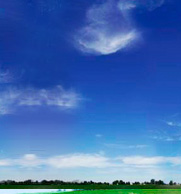Whether it's climate change or severe weather, higher temperatures, greater humidity, and intense rain and flooding increase allergens, a U.S. expert says.
Dr. Brian Rotskoff, a Chicago allergist at the Clarity Allergy Center, said genetic factors play a role in pediatric allergies, but there is growing evidence the environment also shapes children's development of pediatric allergic disease, which includes allergic rhinitis, or hay fever; childhood nasal allergies; asthma; and even eczema, or atopic dermatitis.
"Children's airways are impacted by allergens from the time they're in utero. Allergies and asthma can take root at any stage in their prenatal development or childhood," Rotskoff said in a statement.
"Unfortunately, our air quality is worsening and the impact on growing children is particular worrisome. We're seeing more and more children with allergic conditions. It may start as eczema in infants, and then progress to asthma or allergies as the children age and become more active.
"I firmly believe in the connection between increased environmental exposure and allergy trends."
Those trends include:
-- Pollen and mold exposure are linked with more severe respiratory symptoms in children with asthma and allergic diseases.
-- Two-thirds of children with eczema are ultimately diagnosed with hay fever; 50 percent go on to develop asthma.
-- Pediatric emergency room visits increase immediately following high grass pollen count days, a Canadian study found.
-- 10 percent of children age 17 and younger suffer from hay fever, the American Academy of Allergy Asthma & Immunology said.
-- 10 percent of children have asthma and 60 percent of those cases are considered allergic-asthma, reports The Asthma and Allergy Foundation of America.




 Română
Română English
English


